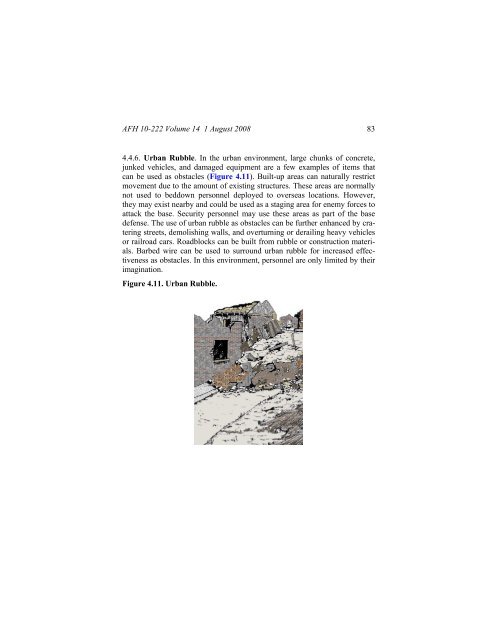Civil engineer guide to fighting positions, shelters, obstacles
Civil engineer guide to fighting positions, shelters, obstacles
Civil engineer guide to fighting positions, shelters, obstacles
Create successful ePaper yourself
Turn your PDF publications into a flip-book with our unique Google optimized e-Paper software.
AFH 10-222 Volume 14 1 August 2008 83<br />
4.4.6. Urban Rubble. In the urban environment, large chunks of concrete,<br />
junked vehicles, and damaged equipment are a few examples of items that<br />
can be used as <strong>obstacles</strong> (Figure 4.11). Built-up areas can naturally restrict<br />
movement due <strong>to</strong> the amount of existing structures. These areas are normally<br />
not used <strong>to</strong> beddown personnel deployed <strong>to</strong> overseas locations. However,<br />
they may exist nearby and could be used as a staging area for enemy forces <strong>to</strong><br />
attack the base. Security personnel may use these areas as part of the base<br />
defense. The use of urban rubble as <strong>obstacles</strong> can be further enhanced by cratering<br />
streets, demolishing walls, and overturning or derailing heavy vehicles<br />
or railroad cars. Roadblocks can be built from rubble or construction materials.<br />
Barbed wire can be used <strong>to</strong> surround urban rubble for increased effectiveness<br />
as <strong>obstacles</strong>. In this environment, personnel are only limited by their<br />
imagination.<br />
Figure 4.11. Urban Rubble.
















